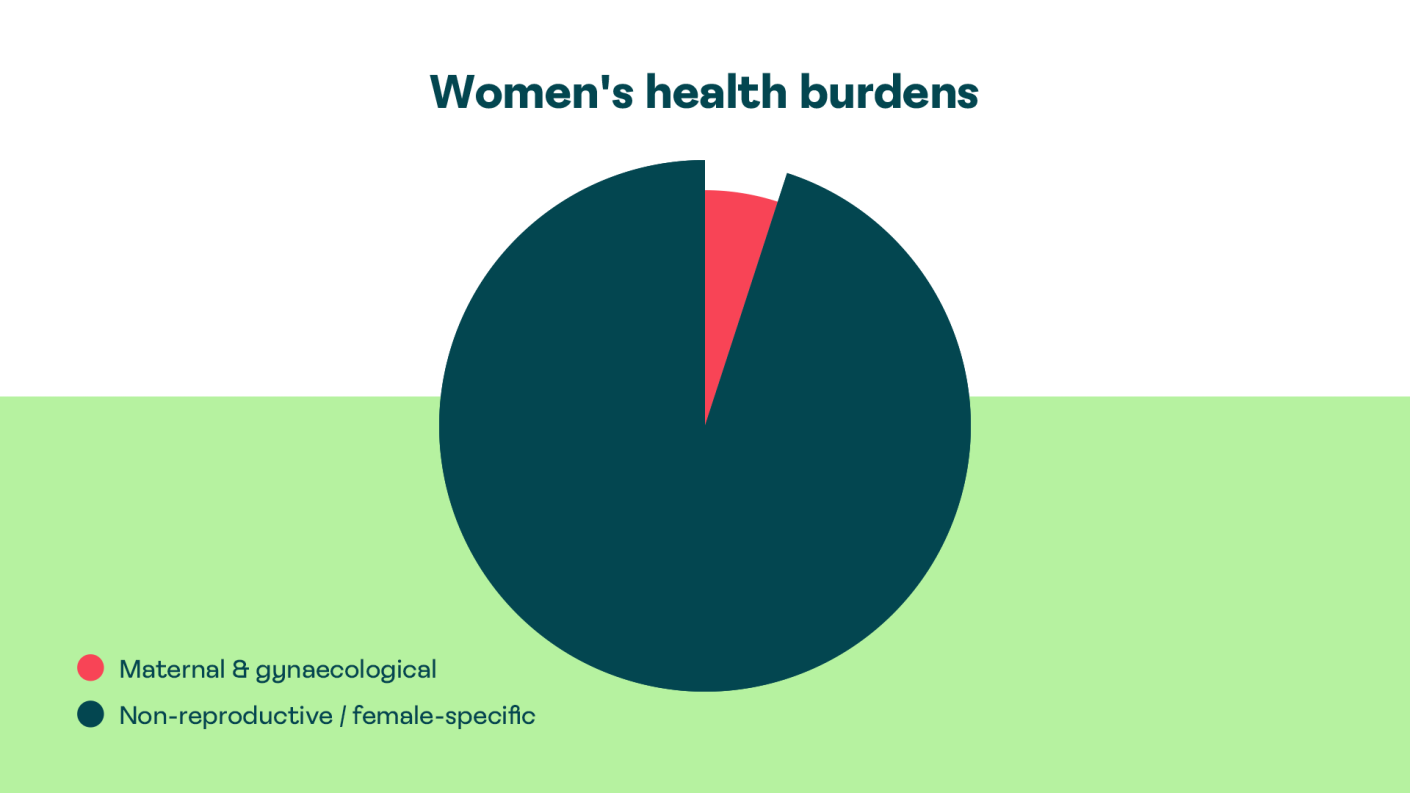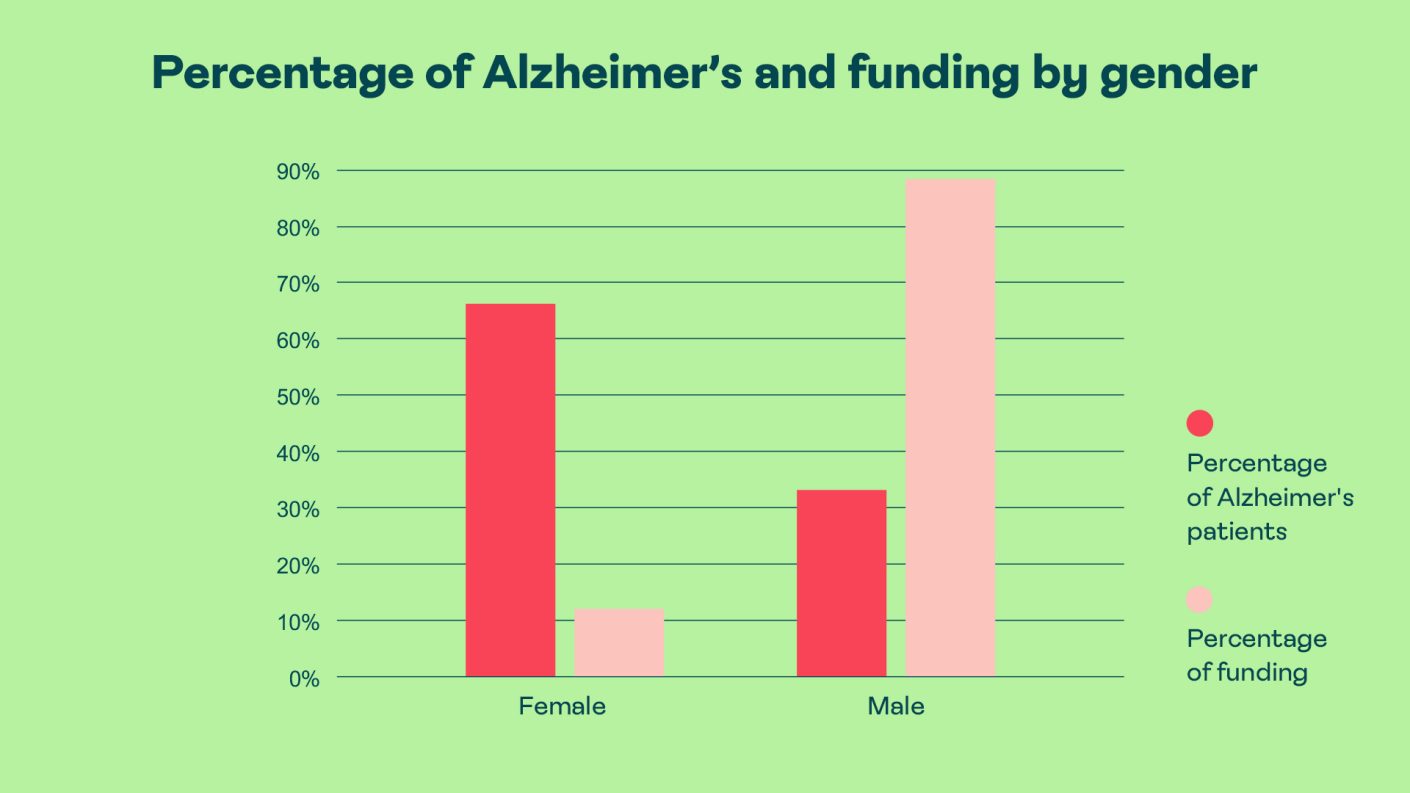Blog
Closing the gender gap: redefining women’s health beyond reproductive health
Discover the critical issues facing women’s healthcare in 2024, from knowledge and access gaps to underrepresentation in research. This is an urgent call to action for brands to prioritise women’s health and bridge these disparities.


Jeannie Hoyer
27 March 2024
5 min read
It’s 2024 – health is no longer seen as primarily reactive care that focuses solely on physical health. We know quality health care means proactively preventing disease and caring for the whole person including one’s physical, mental, environmental and nutritional health. Now, how does this translate to thinking about women’s health care?
When we think of women’s health, what likely comes to mind are the standard aspects of female care: reproductive health, maternity care and mammograms. Sadly, this narrow focus underrepresents the entirety of health issues women face, leaving massive gaps.
Just how big is women’s health burden?
McKinsey reports the women’s health gap equates to 75 million years of life lost due to poor health or early death. This shakes out to seven days per year per woman. When we zoom in on women’s total health burden, we see only 5% stems from women-specific conditions that would fall in the maternal and gynaecological categories. That means 95% of women’s health burden fall outside of reproductive/female-specific health conditions.

Meanwhile, 47% of women’s total health burden comes from conditions that disproportionately affect women such as headache disorders, auto immune disease, and depression, 4% stems from conditions that affect women differently than men, such as atrial fibrillation and colon cancer, and 43% comes from conditions that do not affect women disproportionately or differently than men. Do you still think reproductive care is an adequate lens for women’s health care?
As supporters, facilitators and providers of women’s health care, we must internalize this as an urgent call to define women’s health care beyond the narrow focus of reproductive health care. Doing so will better position us to take the necessary steps to address the health disparities women face.
Women’s health has paid the price for generations
Historically, women’s health care has been underfunded leading to disparities that have limited providers’ ability to adequately care for female patients. Even as recently as 2020, only 1% of health care research and innovation was invested in female-specific conditions beyond oncology. If you look at disease-specific research, the inequalities become even more glaring. For example, while two-thirds of Alzheimer’s patients are women, only 12% of NIH (National Institute of Health) funding focuses on women. Although we have made strides to close these gaps, we have a long way to go.

Women (and minorities) have also been vastly underrepresented in clinical trials. Only in 1993 did congress pass the NIH inclusion policy, a law that required women and minorities to be subjects in clinical research. When women aren’t adequately represented in clinical drug/treatment research the question remains, is it truly safe and effective for women? Between 1980 and 2023, drugs were 3.5 times more likely to be withdrawn from the market after their release due to health risks/symptoms that presented themselves among female patients. This stat, while alarming, highlights the importance of representation in research.
Women face significant knowledge, care and access gaps
In examining women’s health care, it’s crucial to acknowledge the pervasive knowledge, care and access gaps that exist across various health domains and significantly impact outcomes.
For instance, in America, over 60 million women (44%) are living with heart disease, the leading cause of death among women in the United States. Yet only 56% of women correctly identify heart disease as the leading cause of death among women. How can we begin to make progress treating and preventing a disease when so many women lack awareness of the risk it poses to them?
Similarly, nearly two-thirds (65%) of women aged 40-64 receive no communication from their provider regarding what to expect in menopause. This highlights that many providers are not adequately supporting women through the full life cycle of their reproductive health. As a result, many women are left to navigate a significant portion of their reproductive life cycle alone.
Furthermore, compared to men, women are more likely to experience lapses in health interventions – due to low effectiveness, less access or both. And when we consider the forementioned cards stacked against women, such as heath disease and Alzheimer’s disease, lack of proper health intervention puts them at an even greater disadvantage.
Momentum that favours women’s health
On November 13th, 2023, The White House announced The Initiative on Women’s Health Research, which intends to increase investments in women’s health to spur innovation that effectively closes research and care gaps.
Looking across the broader health care ecosystem, our Health Care 2030 eBook highlights multiple macro health trends moving us towards an age of empowered health care for all. Mental health and prevention are two trends that contribute to women’s health momentum.
Only in recent years has mental health become less taboo. This shift is significant for women’s health, as women are twice as likely to experience depression or anxiety in their life compared to men. By expanding our definition of health care beyond physical health, we not only create the space to address the mental health needs that impact women, but we also set the precedent of evolving how we define and deliver care to better support people’s total health needs.
Prevention also plays an increasing role in health care today. This is driven by advancements in personalized care and technology, as well as people’s desire to achieve longevity and maintain good health as they age. Women are a prime target for engaging with and staying on top of the preventive care available to them because they are typically more engaged with their health care than men. As the health care ecosystem places more weight preventive care, the environment becomes ripe to expand preventive care in ways that can benefit women and all patients.
Empowering women’s health: a call to action for brands
In 2024, women are not sitting on the sidelines; they play critical and active roles in our economy, communities and families. They also tend to be the primary health care decision-maker and care giver for family members in need. The truth of the matter is women carry a huge amount of health influence.
Still, when it comes to women’s health, we continue to face more health disadvantages than men and it’s costing us our health, not to mention the economy. McKinsey estimates the economic value of addressing women’s health burdens would add over $1 trillion dollars to the global economy by 2040. It’s time to prioritise women’s health.
Where can you, as a brand, start?
- Prioritise women and their needs in the research you conduct, and in the strategies, products and services you design and implement.
- Seek to authentically understand women’s health care experiences and needs by putting yourself in their shoes (as much as possible). And if you can’t physically do that – observe and leverage consumer conversations as part of empathy-building socialization.
- Rewire your definition of women’s health care and preventive care that goes beyond gynaecological health, maternity care and mammograms.
- Put focused effort and investment towards closing care and access gaps that adversely and uniquely affect women to improve how we support and care for women throughout their entire lives.
As brands, there is so much we can do to improve women’s health care, and the points above are just a starting point. By moving towards a future where women’s health care extends beyond reproductive health care, we can better address and support the whole-health needs of women.
Health care 2030
Ready to revolutionise women’s health care? Discover five transformative trends that are shaping the industry in our ‘Health care 2030’ eBook.